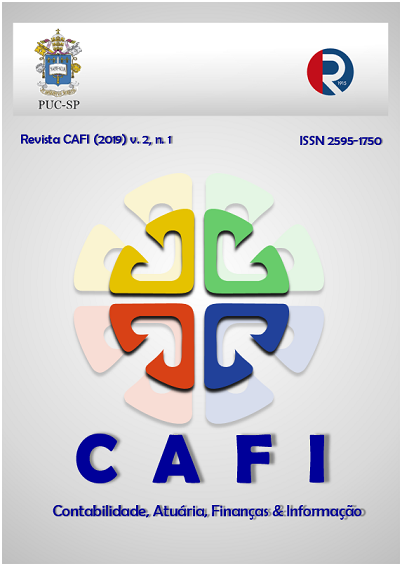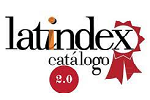The Adoption of Lean Manufacturing to Improve Performance a Comparative Study Adidas and Nike
DOI:
https://doi.org/10.23925/cafi.v2i1.40912Abstract
This article is about the Lean Manufacturing concept. The current reality presents highly competitive markets and the incessant search of improvement of performance by the managers aiming at better profit margins and reduction of wastes. Such practices result in lower costs and better return on business. The delimitation of the study occurred by choosing two companies that occupy prominent positions in the sporting goods sector: Nike and Adidas. A comparative analysis between such companies, since there is the adoption of lean manufacturing only in Nike. The analysis with the financial statements of both companies showed better efficiency for the company with lean culture. Therefore, this article demonstrates positive results through the adoption of Lean Manufacturing in Lean Accounting as options and guidelines for the reduction of waste and better operational performance that result in better monetary outcomes for the organizations that decide to adopt lean manufacturing, the implementation of new business practices.
Keywords: Lean thinking. Lean manufacturing. Accounting lean.
References
Atkinson, Anthony A.; Banker, Rajiv D.; Kaplan, Robert s.; Young, S. Mark. (2011). Contabilidade Gerencial. 3 ed . São Paulo: Atlas.
Carbonera, Normides J.. Lean Enterprise: an Innovation on the controllership, accounting organizations and society. (2012). Disponível em: https://www.lean.org.br/artigos/185/a- controladoria-na-lean-enterprise.aspx. Acesso em 12/11/2018.
Cunningham, Jean. Realidade dos Demonstrativos de Resultados Financeiros Lean,
International Journal of Operations & Production Management. (2012). Disponível em https://www.lean.org.br/artigos/193/A-Realidade-dos-Demonstrativos-de-Resultados- Financeiros-Lean.aspx?utm_source=leanshop-artigos&utm_medium=link-detalhe. Acesso em: 11/11/2018.
Dowbor, Ladislau. (2016). O Pão Nosso de Cada Dia. São Paulo: Perseu Abramo.
Gil, Antonio Carlos. (2010). Como elaborar Projetos de Pesquisa. 5 ed. São Paulo: Atlas,2010.
Gracanin, Danijela; Buchmeister, Borut; Lalic, Bojan. (2014). Using cost-time profile for value stream optimization. Procedia Engineering, 69, 1225-1231. Disponível em:
<https://www.sciencedirect.com/science/article/pii/S1877705814003592>. Acesso em: 01/11/2018.
Hansen, D. R.; Mowen, M. M.; Guan, L. (2009). Cost management: accounting and control. 6. ed. Mason, OH: South-Western College Pub.
Hines, Peter.; Taylor, David. (2000). Going lean: a guide to implementation. Cardiff: Lean Enterprise Research Center. Disponível em:
<http://www.scielo.br/scielo.php?script=sci_nlinks&ref=000185&pid=S0104- 530X201400010000400019&lng=pt.> Acesso em: 10/11/2018.
Horngren, Charles T.; Sundem, Gary l.; Stratton, William O. (2008). Contabilidade Gerencial. 12 ed. São Paulo: Pearson, 2008.
Jiambalvo, James. (2009) Contabilidade Gerencial. 3 ed . Rio de Janeiro: LTC.
Jones, Daniel T. (2011). As Consequências Financeiras Lean. Disponível em:
<https://www.lean.org.br/artigos/153/as-consequencias-financeiras-do-lean.aspx>. Acesso em: 08/11/2018.
Jusko, Jill. (2007). Accounting for lean tastes. Industry Week. Disponível em:
<https://www.industryweek.com/software-amp-systems/accounting-lean-tastes>. Acesso em: 05/11/2018.
Katayama, Hiroshi.; Bennet, David. Lean production in a changing competitive worlds: a Japonese perspective. International Journal of Operations & Production Management, v.16, n. 2, p. 8-23, 1996. Disponível em: https://waseda.pure.elsevier.com/en/publications/lean- production-in-a-changing-competitive-world-a-japanese-perspe. Acesso em: 02/1/2018.
Kee, R.; Scimidt, A. Comparative Analysis of Utilizing Activity-Base Costing and Theory of Constraints for Making Product-mix decisions. International Journal of Productions Economics. (2000). Disponível em https://pdfs.semanticscholar.org/113b/4f39ef713b1c5578081816a02ae15c68a54e.pdf. Acesso em: 30/10/2018.
Leach, Adam. (2012). Nike reduces lead times through lean manufacturing. Disponível em:
<https://www.cips.org/en/supply-management/news/2012/may/nike-reduces-lead-times- through-lean-manufacturing/>. Acesso em: 11/11/2018.
Lean Accountants (2012). Nike Reports Lean Production Success. Disponível em:
<https://www.leanaccountants.com/2012/05/nike-reports-lean-production-success.html>. Acesso em: 11/11/2018.
Lopez, Patix r. A.; Santos, Jordy F.; Cuatrecasas, Arbós L. (2013). Lean manufacturing:costing the value stream . Industrial Management & Data Systems, 113, v5, 647-688. Disponível em:
<http://dx.doi.org/10.1108/02635571311324124> Acesso em: 08/11/2018.
Malta, João; Cunha, Pedro F. (2011). A new approach for cost modelling and performance evaluation within operations planning. CIRP Journal of Manufacturing Science and Technology. Disponível em: <https://www.sciencedirect.com/science/article/abs/pii/S175558171100068X> Acesso em: 12/11/2018.
Máquina do Esporte (2018). Adidas supera 20 bilhões de euros em vendas com Reebok, EUA e China. Disponível em: <https://maquinadoesporte.uol.com.br/artigo/adidas-supera-20- bilhoes-de-euros-em-vendas-com-reebok-eua-e-china_34137.html>. Acesso em: 11/11/2018.
Mundo das Marcas. (2006). Nike. Disponível em:
<http://mundodasmarcas.blogspot.com/2006/05/nike-just-do-it.html>. Acesso em: 11/11/2018.
Mundo das Marcas. (2006). Adidas. Disponível em:
<http://mundodasmarcas.blogspot.com/2006/06/adidas-impossible-is-nothing.html>. Acesso em: 11/11/2018.
Ortiz, Chris A. Kaizen assembly: designing, constructing, and managing a lean assembly line. 2206. New York: CRC Press, Taylor & Francis Group. Disponível em:
<https://www.emeraldinsight.com/doi/abs/10.1108/aa.2007.03327aae.001>. Acesso em: 02/11/2018.
Pacete, L., (2018). Nike é a marca esportiva com maior receita global. Disponível em:
<http://www.meioemensagem.com.br/home/marketing/2018/08/16/nike-e-a-marca-esportiva- com-maior-receita-global.html>. Acesso em: 11/11/2018.
Pike, Richard H.; Taayles, Mike E.; Mansour, Nur Naha Abu. (2011). Activity-base costing user satisfaction and type of system: a research note. The British Accountig Review, v 43, 65- 72. Disponível em: <https://doi.org/10.1016/j.bar.2010.12.001> . Acesso em: 02/11/2018.
Pryor, Tom. A financial thermometer for lean operations. (2010) Journal of Corporate Accounting & Finance. 21 v 2, 81-91. Disponível em:
<https://www.researchgate.net/publication/246881558_A_financial_thermometer_for_lean_o perations>. Acesso em: 10/11/2018.
Rother, Mike; Shook, Jhon.(2018). Aprendendo a enxergar: mapeando o fluxo de valor para agregar valor e eliminar o desperdício. São Paulo: Lean Institute, 1999. Disponível em:
<https://pt.slideshare.net/diegobiondo37/aprendendo-a-enxergar>. Acesso em: 12/11/2018.
Santos Roberto V. (2010). Evidências de Lean Accounting em empresas enxutas: um estudo de caso exploratório, XVII Congresso Brasileiro de Custos – Belo Horizonte, MG, Brasil.
Disponível em https://anaiscbc.emnuvens.com.br/anais/article/viewFile/635/635. Acesso em: 01/11/2018.
Severino, Antônio Joaquim. (2012). Metodologia do Trabalho Científico. 23ª ed . Cortez.
Stout, David;. Propi, Joseph M. (2011). Implementind time-driven activity-based costing at a medium-size electronics company. Management Acdounti Quartely, 12 v 3 1-11. Disponível em: <https://www.imanet.org/-/media/2896ce1ba1b14b1bb15ebd34f274e528.ashx>. Acesso em: 10/11/2018.
Teixeira, Hipolito F. (2016). Lean Manufacturing e lean accounting cost: um enfoque no real desempenho em empresas de capital aberto na Bovespa. Dissertação (Mestrado em Ciências Contábeis e Atuariais) 94 p. Pontifícia Universidade Católica.PUC/SP. Disponível em https://tede2.pucsp.br/handle/handle/19574. Acesso em: 08/11/2018.
The Leadership Network. (2016). How Nike Used Lean to Solve its Sweatshop Problem. Disponível em: <https://theleadershipnetwork.com/article/how-nike-used-lean- manufacturing>. Acesso em: 11/11/2018.
Vergara, S. (2011). Projetos e Relatórios de Pesquisa em Administração. 15ª. ed. São Paulo: Atlas.
Womak, James; Jones, Daniel.T.; Ross, Daniel. (1992). The Machine that Changed the world. Rawson Associates, New York, NY. Disponível em:
<https://www.goodreads.com/book/show/93903.Machine_That_Changed_the_World>. Acesso em: 01/11/2018.
Womak, James; Jones, Daniel.T.; Ross, Daniel. (1996). Lean Thinking. 1ª ed. São Paulo: Free Press.
Downloads
Published
How to Cite
Issue
Section
License
Copyright (c) 2019 CAFI - Contabilidade, Atuária, Finanças & Informação

This work is licensed under a Creative Commons Attribution 4.0 International License.
Declaração de Direito Autoral
Autores mantém os direitos autorais e concedem à revista o direito de primeira publicação, com o trabalho simultaneamente licenciado sob a Licença Creative Commons Attribution que permite o compartilhamento do trabalho com reconhecimento da autoria e publicação inicial nesta revista.
Declaração de Privacidade
Os nomes e endereços informados nesta revista serão usados exclusivamente para os serviços prestados por esta publicação, não sendo disponibilizados para outras finalidades ou a terceiros.









